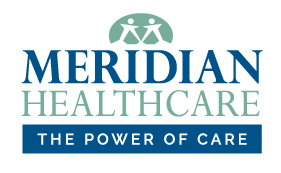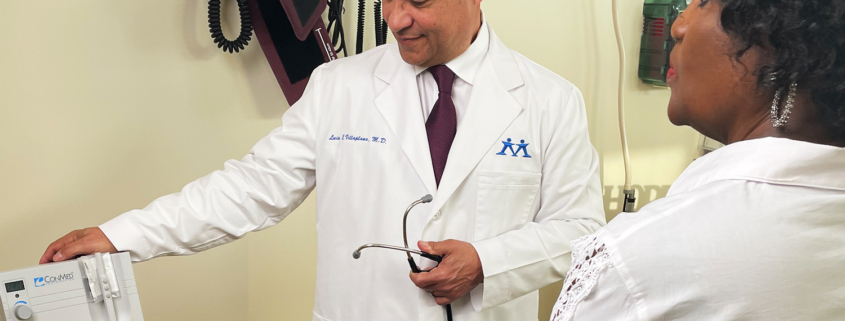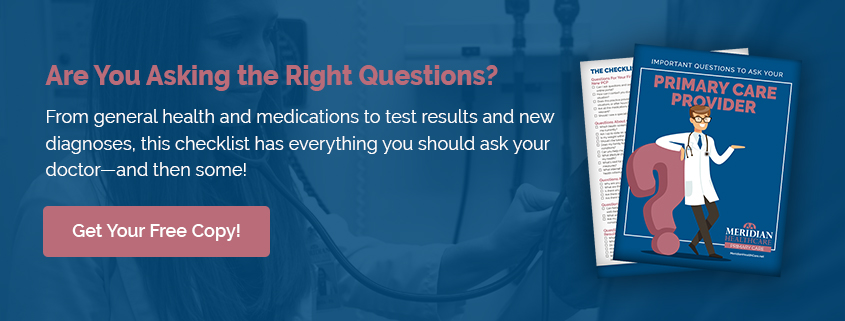The Role of a Primary Care Physician (PCP)
A primary care physician (PCP), sometimes referred to as primary care provider, general practitioner or internist, is a clinician who establishes a long-term relationship with his or her patients (and sometimes the patient’s family) in order to provide preventive care and health education.
A PCP’s role is widespread: diagnose and treat illness and disease, manage complex health conditions, oversee medications and treatments, assist patients coping with stress and/or adjusting to major life events, communicate effectively with other medical specialists, and refer patients to appropriate specialist services as needed.
As the healthcare industry continues to rapidly change, with more and more people enrolling in health insurance plans, patients have more choices available to them when it comes to choosing a physician to see for care.
So, how does the role of a primary care physician differ from that of other doctors in the field?
What Does a Primary Care Physician Do?
Having a primary care physician is an integral part of maintaining your total wellness. Consequently, you don’t just see your PCP when you’re not feeling well. When it’s time for your annual checkup, or you want to start a program to improve your overall health, your PCP should be your first stop.
A PCP can provide vaccines or other immunizations, and since they’re familiar with your medical history, they can also keep an eye on any chronic conditions (ranging from heart disease and hypertension to diabetes and rheumatoid arthritis). Your PCP also keeps track of the progression of conditions, giving medical advice on how to manage concerns and recommendations for specialists, as needed.
Essentially, a PCP becomes your trusted healthcare provider, addressing your health concerns, whether they be large or small.
What Training Does a Primary Care Physician Receive?
The education and training for a primary care physician is extensive and involves a number of potential paths.
Pre-Med
Students start by entering a “pre-med” program and choosing a major. Some are science-related, such as biological sciences or genetics, but students can also choose ethics or sociology. According to figures from the Association of American Medical Colleges (AAMC), over half of medical school applicants choose biological sciences.
In addition to completing a pre-med program, students must also pass the Medical College Admissions Test (MCAT), submit letters of recommendation, and have an interview with an admissions committee to enter medical school.
Medical School
Once the student enters medical school, they have two paths to choose from: become a doctor of medicine (MD) or a doctor of osteopathy (DO). The main difference between the two is the philosophy of patient care.
MDs learn allopathy, the more traditional of the two philosophies. The MD’s philosophy of treatment involves utilizing tools and technology to diagnose health issues, and then treat those issues with medication.
DOs, meanwhile, learn osteopathy as part of their degree. This method looks at the entire body as a single unit rather than a collection of systems. In addition to the tools that MDs use, DOs learn osteopathic manual medicine, which is the use of one’s hands to diagnose and treat medical issues. Techniques involve applying gentle pressure to areas of the body as well as feeling different bodily structures through a patient’s skin.
Residency
Medical residency is required for any PCP to obtain licensure. They must spend three years in residency, which is post-graduate training for new MDs or DOs in their chosen specialty. The MD or DO enters the healthcare system and puts their education into practice under the supervision of attending physicians.
Licensure
The final step for fully trained doctors is to obtain board certification, either by the American Board of Family Medicine or the American Osteopathic Board of Family Physicians. Then he or she will apply for a license to practice in the state that he or she resides in.
The Types of Primary Care Physician
Primary care doctors practice in slightly different areas of medicine and patient care, depending on their medical specialty. Types of PCP include the following:
Family Practice Doctors
Family practice doctors, also known as family medicine doctors or family doctors, specialize in the comprehensive healthcare services for people of all ages. Family practice doctors offer preventive care, including routine checkups, health-risk assessments, immunization and screening tests, and personalized counseling on maintaining a healthy lifestyle.
General Internal Medicine Doctors
Internal medicine physicians, or internists, are specialists who apply scientific knowledge and clinical expertise to the diagnosis, treatment, and compassionate care of adults across the spectrum, from health to complex illness.
Internists do not treat patients of all ages, only those over the age of eighteen. If you have a condition that is beyond their scope, they will initiate a referral to a specialist.
Pediatricians
The field of pediatrics is focused on the treatment of children from birth until age eighteen. Pediatricians specialize in diagnosing and treating a variety of conditions in children of all ages, from infants to adolescents.
Obstetrician/Gynecologists (OB/GYNs)
OB/GYNs focus on women’s health. Specifically, they provide medical care related to pregnancy or female reproductive health, including prenatal care, delivery, postpartum care, gynecological exams and treatment of disorders of the female reproductive system.
Geriatricians
Geriatricians specialize in the care and wellness of elderly patients. Older adults frequently suffer from chronic conditions, such as high blood pressure and diabetes, and most have more than one chronic condition (consequently making their health needs different from younger patients).
Nurse practitioners (NPs)
Nurse practitioners are advanced practice registered nurses (APRNs) who provide health care services similar to those of physicians. They have received additional patient-centric training in a specialty field such as pediatrics or family health, and work closely with doctors. In certain states, they can prescribe medications and perform procedures just like physicians do.
Physician Assistant (PA)
A physician assistant, or PA, often gets confused with a nurse practitioner, as they perform similar patient care roles. A PA’s education, however, uses a disease-oriented model like that of a medical student. Once a PA graduates, they choose from a variety or specialty areas.
A PCP is Your Partner in True Health Management
Primary care physicians are responsible for both the emotional and physical wellbeing of their patients. They do much more than simply address common healthcare needs and injuries – they help prevent them. By offering their patients advice on things like diet and exercise, PCPs help patients avoid many of the common causes of serious illnesses.
Having a trusted primary care physician is an important aspect of overall health. If you’re in need of a primary care physician, Meridian Healthcare is ready to be your partner in wellness. Reach out to our staff today!






